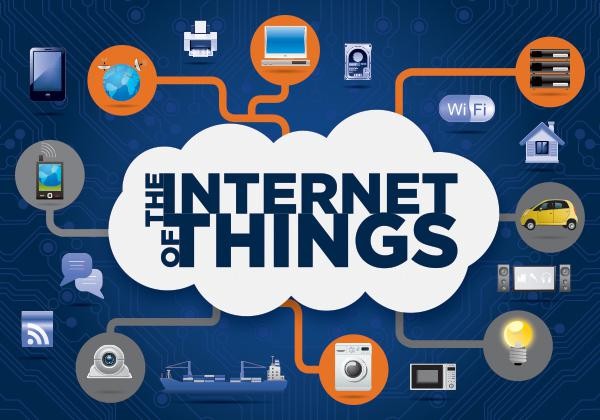-
FreeRTOS
FreeRTOS is a popular real-time operating system (RTOS) for microcontrollers and small microprocessors. It’s widely used in embedded systems, particularly in the Internet of Things (IoT) domain.
Here are some key points about FreeRTOS:
- Open-source: FreeRTOS is distributed under the MIT License, making it free to use and modify for any purpose.
- Small footprint: FreeRTOS has a very small memory footprint, making it ideal for resource-constrained devices.
- Low power consumption: FreeRTOS is designed to be energy-efficient, making it suitable for battery-powered devices.
- Easy to use: FreeRTOS has a simple and well-documented API, making it easy for developers to get started.
- Scalable: FreeRTOS can be scaled to meet the needs of a wide range of devices, from simple sensors to complex systems.
- Feature-rich: FreeRTOS includes a wide range of features, such as task scheduling, memory management, and communication protocols.
-
Ubuntu Core
Ubuntu Core is a specialized version of the Ubuntu operating system designed for IoT and embedded devices. It’s engineered for security, reliability, and ease of management in these environments.
- Snap-based: Ubuntu Core is constructed entirely of Snap packages, which are self-contained software bundles that offer enhanced security, isolation, and transactional updates.
- Transactional updates: Updates are applied in an “all-or-nothing” manner, ensuring system integrity and preventing partial updates or failures. If an update fails, the system reverts to its previous state.
- Immutable base system: The core operating system files are read-only, protecting them from accidental or malicious modification. This contributes to enhanced security and stability.
- Minimal footprint: Ubuntu Core has a small footprint, making it suitable for resource-constrained devices.
- Remote management: Devices running Ubuntu Core can be managed remotely through the Ubuntu One cloud service, enabling tasks such as application deployment, configuration, and updates.
- Long-term support: Canonical, the company behind Ubuntu, provides security updates and bug fixes for Ubuntu Core for up to 10 years, ensuring long-term support for devices.
-
Windows IOT
Windows IoT, short for Windows Internet of Things, is a family of operating systems from Microsoft specifically designed for use in embedded systems and IoT devices. It offers enterprise-grade power, security, and manageability to IoT solutions, leveraging the familiarity and benefits of the Windows ecosystem.
- Key features of Windows IoT:
- Windows-based: Built on the Windows platform, providing familiarity for developers and compatibility with a wide range of hardware and software.
- Multiple editions: Available in different editions to suit various device types and requirements, including:
- Windows 10 IoT Core: A lightweight, headless version for low-power devices with limited resources.
- Windows 10 IoT Enterprise: A full-featured version for more complex devices, offering enterprise-grade features like device lockdown, remote management, and security.
- Windows Server IoT 2019: A server-based version designed for data aggregation from multiple IoT devices.
- Development tools: Integrates with Visual Studio and other familiar Windows development tools, making it easier for developers to create and deploy IoT applications.
- Cloud connectivity: Works seamlessly with Azure IoT Hub and other cloud services, enabling device management, data collection, and analytics.
- Security: Emphasizes security features to protect devices from cyberattacks, including secure boot, device lockdown, and encryption.
- Manageability: Offers tools for remote device management, configuration, and updates, simplifying deployment and maintenance.
-
Mbed OS
Mbed OS is an open-source, operating system for ARM Cortex-M microcontrollers, specifically designed for the Internet of Things (IoT). It simplifies and accelerates developing connected devices by providing a rich set of features and abstractions.
- Key characteristics:
- Open-source: Free to use and modify under the Apache License 2.0, fostering a vibrant community and continuous development.
- Modular: Libraries and drivers are included only when needed, reducing memory footprint and simplifying builds.
- Easy to use: C/C++ programming interface with well-documented APIs and extensive learning resources.
- Real-time: Supports deterministic, multithreaded execution with optional RTOS (Real Time Operating System) for complex applications.
- Connected: Offers drivers for various popular connectivity protocols like Bluetooth Low Energy, Wi-Fi, and cellular networks.
- Secure: Integrates multi-layered security features including secure boot, memory protection, and encryption.
- Hardware agnostic: Runs on a wide range of ARM Cortex-M boards, providing flexibility for development and deployment.
- Benefits:
- Faster development: Streamlined development process with pre-built libraries and tools.
- Reduced complexity: Abstractions hide low-level hardware details, allowing developers to focus on application logic.
- Lower costs: Open-source nature and modularity minimize licensing and hardware development costs.
- Improved performance: Efficient memory management and resource utilization lead to optimized device performance.
- Scalability: Adapts to various device requirements and complexity levels.
